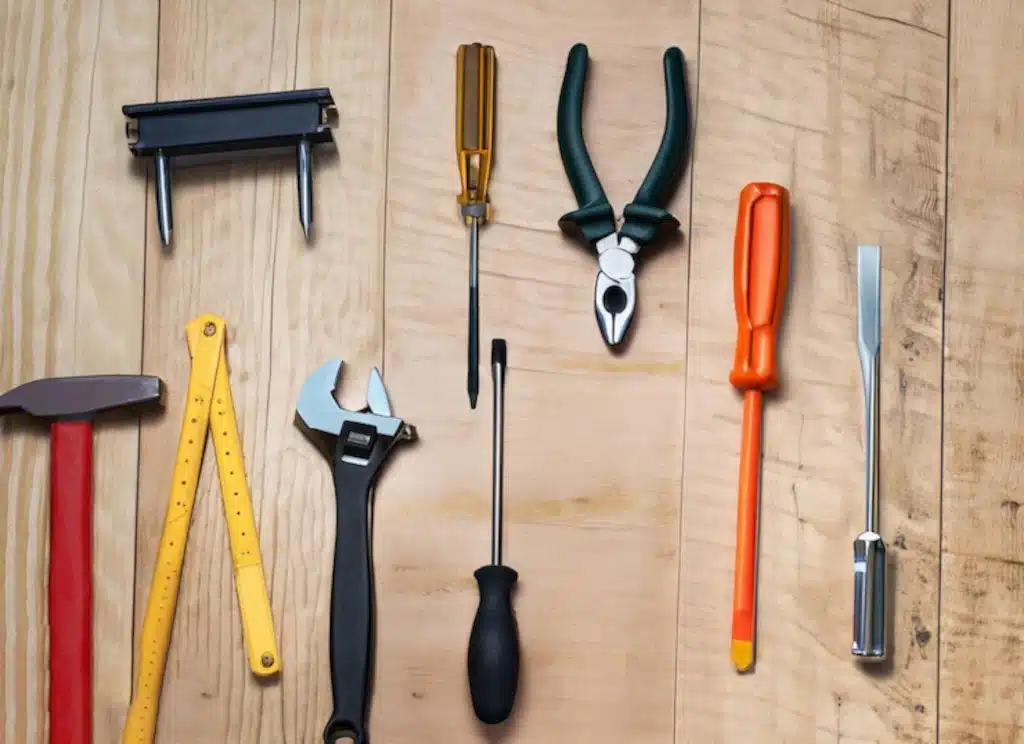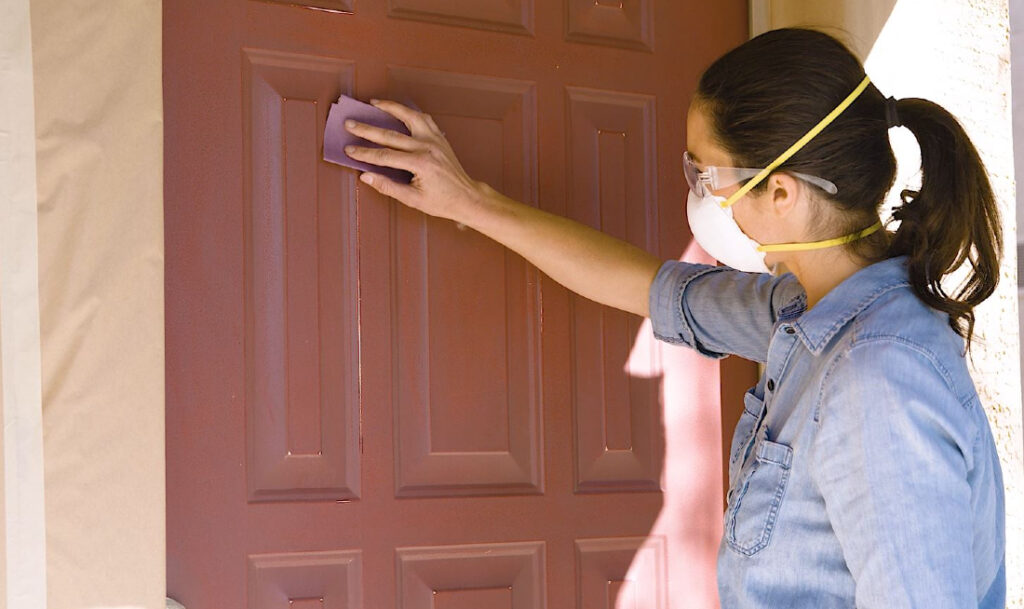A dented garage door can quickly become a major eyesore, affecting both your home’s appearance and its function.
Whether from a bump, wear, or an accident, getting it fixed is essential. Wondering how to repair it yourself?
Keep reading to discover an easy, affordable guide to restoring your garage door’s look and efficiency.
How to Repair a Dented Garage Door?
To repair a dented garage door, gently hammer out the dent from the inside, use a hairdryer to soften the area, and then fill it with filler if needed. Sand and paint to restore its look. For a more professional and lasting solution, consider contacting affordable garage door repair in Boulder Hill IL to ensure the job is done right without breaking the bank.
If you’re wondering, can you paint a garage door, the answer is yes—and it’s a great way to boost curb appeal. Just make sure to clean the surface thoroughly, sand it if necessary, and use a high-quality exterior paint that’s suitable for metal or wood, depending on your door type.
Key Takeaways
- Small, shallow dents can be repaired with basic tools and materials for little cost.
- Larger dents or those affecting the functionality of the door may require professional repair.
- Regular maintenance can help prevent dents and other issues with your garage door, saving you money on future repairs.
Understanding the Problem: What Causes Dents in Garage Doors?
Garage doors can become dented for a variety of reasons. The most common causes include:
1. Impact from Vehicles or Objects
If a vehicle accidentally backs into the garage door or if a heavy object hits the door, it can cause a dent.
This is especially true for steel and aluminum doors, which are more prone to denting upon impact compared to wooden doors.
2. Regular Wear and Tear
Over time, the garage door’s surface may become dented due to the repeated opening and closing of the door, especially if the door isn’t regularly maintained. If you notice visible dents or hear unusual noises, it may be time to seek garage door repair in Maple Park to prevent further damage and ensure smooth operation.
This could lead to small imperfections that worsen over time.
3. Weather Conditions
Heavy winds, hailstorms, or falling tree branches can also cause dents, especially in softer materials like fiberglass or aluminum.
4. Accidental Bumps or Scrapes
Sometimes, human error during everyday activities, like accidentally bumping into the door with gardening tools or bikes, can lead to small dents or dings.

When Can You Repair a Dented Garage Door Yourself?
Before you dive into repairing a dent in your garage door, it’s important to assess the extent of the damage. Small, shallow dents are usually easy to repair without professional help.
However, larger, deeper dents or issues with the garage door’s tracks, springs, or mechanisms may require professional assistance.
DIY repairs are ideal for the following:
- Small dents or dings that haven’t affected the door’s functionality.
- Shallow damage that doesn’t require the replacement of parts like panels or rollers.
- If the door’s metal surface is smooth and doesn’t have any deep scratches or rust, you can likely proceed with a repair on your own.
For more serious damage, or if you’re unsure about repairing it yourself, it’s always a good idea to call in a professional garage door technician. Opt for emergency garage door repair in North Aurora, IL, to get fast, reliable service and ensure your garage door is back in working condition quickly.
If you live in Elburn, IL, you can get our garage door repair in Elburn, IL as well.
Tools and Materials You’ll Need for Garage Door Repair
Before getting started, you’ll need a few essential tools and materials to fix your dented garage door.
Here’s a list of what you’ll need:
1. Rubber mallet or wooden block: This will help gently tap the dent out without causing further damage to the surface.
2. Gloves: To protect your hands from sharp edges, especially if your door is made of metal or has rusted areas.
3. Sandpaper: To smooth out any rough edges or scratches after the repair.
4. Filler or putty: For any deeper dents that can’t be completely smoothed out.
5. Primer and paint: If you’re repainting the surface after repair to match the rest of the door.
6. Clean cloth: For cleaning the surface before and after the repair.

Step-by-Step Guide to Repairing a Dented Garage Door
Step 1: Assess the Damage
Before you begin fixing the dent, it’s important to thoroughly assess the damage. Examine the dent size and depth to determine if it’s something you can easily repair.
For minor dents, you can proceed with the following steps. If the damage is more severe (e.g., a large dent or one affecting the functionality of the door), you may want to consider consulting a professional.
Step 2: Clean the Area
Start by cleaning the area around the dent. Remove any dirt, debris, or dust that has accumulated on the door.
This will help you get a clear view of the damage and ensure that any repair materials adhere to the surface effectively.
Step 3: Gently Tap Out the Dent
For small, shallow dents, you can often use a rubber mallet or a wooden block to gently tap out the dent. Here’s how to do it:
Place a wooden block on the dent. This will help spread out the force and prevent further damage to the door.
Use a rubber mallet to tap the wooden block gently, working around the edges of the dent. Don’t hit the dent directly, as this could cause more damage.
Gradually tap the area until the dent begins to rise and smooth out. If necessary, alternate between tapping the dent and checking the surface to see how it’s progressing.
For larger dents, it may be necessary to apply more force or use a different technique.
Step 4: Use a Hairdryer for Deeper Dents
If the dent is deep, you may need to soften the material before attempting to tap it out. For metal garage doors, you can use a hairdryer to heat the area around the dent for a few minutes.
For garage door repair in Elburn, IL, trust our expert technicians to handle dents, broken springs, or misaligned tracks. We use proven techniques, such as heating dented areas to make metal malleable for easy repair. Contact us for reliable and efficient service.
Use the rubber mallet to gently tap the dent from the inside of the door, working your way around the edges to push the dent out.
Step 5: Fill in Deeper Dents
If the dent is too deep to completely smooth out, you can use filler or putty to fill in the space. Here’s how:
Apply filler to the damaged area, using a putty knife to smooth it over the dent. Once the filler has dried, sand it down to match the surrounding area.
If necessary, paint over the filler with a matching primer and paint.
Step 6: Sand and Repaint the Door
After repairing the dent, you’ll want to sand down any rough edges around the area. Use fine-grit sandpaper to smooth out any uneven surfaces left by the filler.
Once you’ve finished sanding, clean the area again to remove dust and debris. Then, apply primer followed by paint to restore the look of the door and protect it from the elements.

How Much Does It Cost to Repair a Dented Garage Door?
If you’re seeking the best garage door repair services in Schaumburg, IL, or even South Elgin, IL, several reputable companies offer reliable and professional assistance for various garage door issues, including dent repairs.
Here’s a general breakdown of what you might expect to pay:
Small Dent Repair (DIY): If you’re repairing a small, shallow dent yourself, the cost is usually minimal.
You’ll only need a rubber mallet, sandpaper, and possibly some filler and paint, which may cost between $20 and $50.
Professional Repair: If you need to hire a professional, the cost of repairing a dent in your garage door can range from $100 to $300, depending on the severity of the dent and whether any parts need to be replaced.
Panel Replacement: In cases where the damage is severe and the dent cannot be repaired, you may need to replace the entire panel.
Panel replacements typically cost $200 to $500, depending on the size of the door and the material.
Frequently Asked Questions
1. Can I repair a dent in my garage door myself?
Yes, small dents can often be repaired with basic tools like a rubber mallet, filler, and paint. Larger or deeper dents may require professional help.
2. How much does it cost to repair a garage door dent?
The cost of repairing a garage door dent can range from $20 to $300, depending on whether you do it yourself or hire a professional.
3. What if my garage door dent is too deep to fix?
If the dent is too deep, you may need to replace the damaged panel. Panel replacements typically cost between $200 and $500.
Conclusion
A dented garage door may seem like a small issue, but addressing it quickly can help preserve the door’s functionality and appearance. If you’re dealing with such problems, seeking garage door repair in Mooseheart, IL can ensure the damage is fixed promptly and professionally.
Regular maintenance can also help prevent dents and other issues, saving you money and hassle in the long run. For homeowners looking for reliable service, choosing the Hinckley IL best garage door repair service ensures your system remains in top condition, avoiding costly repairs and extending the life of your garage door.
By understanding how to fix a dented garage door and when to seek professional help, you can keep your garage door in top shape for years to come.

